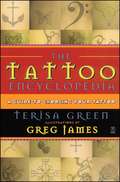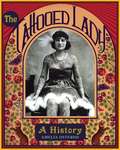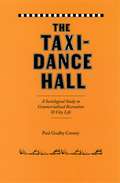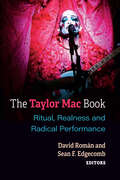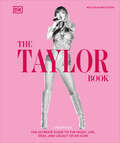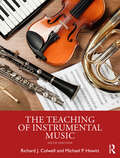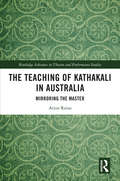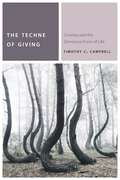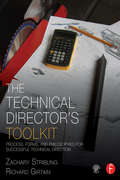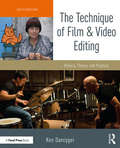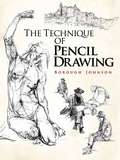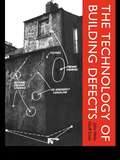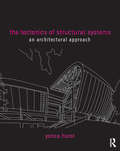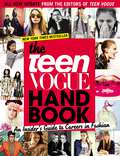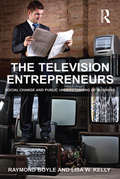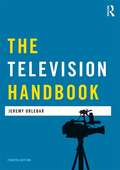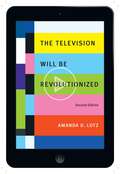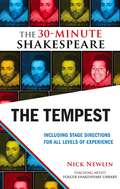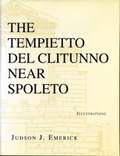- Table View
- List View
The Tattoo Encyclopedia: A Guide to Choosing Your Tattoo
by Terisa GreenA unique illustrated reference on the origins and meanings of nearly one thousand tattoo symbols that serves as a guide for choosing a personal image and provides a fascinating look at the tattoo as a work of art. Tattoos continue to move into the mainstream and grow in popularity with each passing day. For people contemplating getting a tattoo, however, the choice of images can be overwhelming. A comprehensive, informative exploration of the colorful world of tattoos,The Tattoo Encyclopediapresents concise descriptions of symbols both common and unusual and sheds light on their historic, religious, and cultural significance. Organized in a convenient A-to-Z format, cross-referenced, indexed by category, and illustrated with three hundred samples of authentic tattoo line art, this book features a stunning array of images ranging from ancient Buddhist and Chinese designs to those sported by twenty-first-century bikers. The definition of each symbol includes the widely accepted interpretation based on historical fact and cultural source, as well as various interpretations that have developed across different cultures and time periods. Whether choosing a personally significant tattoo, wanting to learn more about a symbol, or simply being interested in tattoos as a form of art and body decoration, readers will discover the richness of tattoo culture inThe Tattoo Encyclopedia.
The Tattooed Lady: A History
by Amelia Klem OsterudLiving in a time when it was scandalous even to show a bit of ankle, a small number of courageous women covered their bodies in tattoos and travelled the world, performing nearly nude on carnival stages. These gutsy women spun amazing stories for captive audiences about abductions and forced tattooing at the hands of savages, but little has been shared of their real lives. The first book of its kind, The Tattooed Lady uncovers the true stories behind these women, bringing them out of the sideshow realm and into their working class realities. Thoroughly fascinating.
The Taxi-Dance Hall: A Sociological Study in Commercialized Recreation and City Life
by Paul G. CresseyFirst published in 1932, The Taxi-Dance Hall is Paul Goalby Cressey’s fascinating study of Chicago’s urban nightlife—as seen through the eyes of the patrons, owners, and dancers-for-hire who frequented the city’s notoriously seedy “taxi-dance” halls. Taxi-dance halls, as the introduction notes, were social centers where men could come and pay to dance with “a bevy of pretty, vivacious, and often mercenary” women. Ten cents per dance was the usual fee, with half the proceeds going to the dancer and the other half to the owner of the taxi-hall. Cressey’s study includes detailed maps of the taxi-dance districts, illuminating interviews with dancers, patrons, and owners, and vivid analyses of local attempts to reform the taxi-dance hall and its attendees. Cressey’s study reveals these halls to be the distinctive urban consequence of tensions between a young, diverse, and economically independent population at odds with the restrictive regulations of Prohibition America. Thick with sexual vice, ethnic clashes, and powerful undercurrents of class, The Taxi-Dance Hall is a landmark example of Chicago sociology, perfect for scholars and history buffs alike.
The Taylor Mac Book: Ritual, Realness and Radical Performance (Triangulations: Lesbian/Gay/Queer Theater/Drama/Performance)
by Sean Edgecomb David RomanThis is the first book to dedicate critical attention to the work of influential theater-maker Taylor Mac. Mac is particularly celebrated for the historic performance event A 24-Decade History of Popular Music, in which Mac, in fantastical costumes designed by collaborator Machine Dazzle, sang the history of the United States for 24 straight hours in October 2016. The MacArthur Foundation soon thereafter awarded their “genius” award to a “writer, director, actor, singer, and performance artist whose fearlessly experimental works dramatize the power of theater as a space for building community . . . [and who] interacts with the audience to inspire a reconsideration of assumptions about gender, identity, ethnicity, and performance itself.” Featuring essays, interviews, and commentaries by noted critics and artists, the volume examines the vastness of Mac’s theatrical imagination, the singularity of their voice, the inclusiveness of their cultural insights and critiques, and the creativity they display through stylistic and formal qualities and the unorthodoxies of their personal and professional trajectories. Contributors consider the range of Mac’s career as a playwright, performer, actor, and singer, expanding and enriching the conversation on this much-celebrated and deeply resonant body of work.
The Taylor Swift Book: A Deep Dive Into Songs, Cats, Style, Tours, Lore and Much More
by Malcolm MackenzieGo beyond Taylor Swift’s iconic music with The Taylor Book, the deepest and most comprehensive exploration of her stratospheric career to date.From her humble days as a teen country artist to her record-obliterating Eras Tour, Taylor Swift is a supernova that shows no sign of burning out. This groundbreaking book gives her career the depth it deserves, featuring her studio albums alongside iconic outfits, music videos, muses, trailblazing re-recordings, and more – everything that die-hard fans need to know about is right here.The Taylor Book explores the life of an icon, including:Expert analysis of every original album and Taylor’s Version re-recording, up to and including The Tortured Poets DepartmentIn-depth exploration of Taylor Swift’s most beloved songs and music videosBreakdowns of Taylor’s notorious Easter Eggs, helping fans understand and explain the secret messaging she slips into every albumExploration of her songwriting process and genre experimentationIconic fashion moments from each EraExquisite images spanning Taylor’s entire careerA look at Taylor’s work beyond the music, from her acting credits and fandom to her relationships and politics…and much more!The Taylor Book is the ultimate guide to a generation-defining pop sensation, packed with beautiful images and all the context you need to fully immerse yourself in the Swiftiverse. Whether you’re already a die-hard fan looking for deeper insight into her life or a brand-new Swiftie eager for the most complete guide to all things Taylor Swift, this is the book for you.
The Taylorized Beauty of the Mechanical: Scientific Management and the Rise of Modernist Architecture (Princeton Studies in Cultural Sociology #10)
by Mauro F. GuillénThe dream of scientific management was a rationalized machine world where life would approach the perfection of an assembly line. But since its early twentieth-century peak this dream has come to seem a dehumanizing nightmare. Henry Ford's assembly lines turned out a quarter of a million cars in 1914, but all of them were black. Forgotten has been the unparalleled new aesthetic beauty once seen in the ideas of Ford and scientific management pioneer Frederick Winslow Taylor. In The Taylorized Beauty of the Mechanical, Mauro Guillén recovers this history and retells the story of the emergence of modernist architecture as a romance with the ideas of scientific management--one that permanently reshaped the profession of architecture. Modernist architecture's pioneers, Guillén shows, found in scientific management the promise of a new, functional, machine-like--and beautiful--architecture, and the prospect of a new role for the architect as technical professional and social reformer. Taylor and Ford had a signal influence on Bauhaus founder Walter Gropius and on Le Corbusier and his Towards a New Architecture, the most important manifesto of modernist architecture. Architects were so enamored with the ideas of scientific management that they adopted them even when there was no functional advantage to do so. Not a traditional architectural history but rather a sociological study of the profession of architecture during its early modernist period, The Taylorized Beauty of the Mechanical provides a new understanding of the degree to which modernist architecture emerged from a tradition of engineering and industrial management.
The Teaching of Instrumental Music
by Richard J. Colwell Michael P. HewittThe Teaching of Instrumental Music, Sixth Edition, introduces music education majors to basic instrumental pedagogy for the instruments and ensembles commonly found in the elementary and secondary curricula. It focuses on the core competencies required for teacher certification in instrumental music, with the pervasive philosophy to assist teachers as they develop an instrumental music program based on understanding and respecting all types of music.Parts I and II focus on essential issues for a successful instrumental program, presenting first the history and foundations, followed by effective strategies in administrative tasks and classroom teaching. Parts III, IV, and V are devoted to the skills and techniques of woodwind, brass and percussion, and string instruments. In all, The Teaching of Instrumental Music is the complete reference for the beginning instrumental teacher, commonly retained in a student’s professional library for its unique and comprehensive coverage.This Sixth Edition includes: Streamlined language and improved layout throughout, making this edition more concise and accessible to students. Updated content throughout, including insights from current research for curriculum development, coverage of current law and policy changes that impact the classroom, contemporary motivational strategies, and more information on the history of African-American and all-female music ensembles. Updated references, photos, lists of artists, and online resources.
The Teaching of Kathakali in Australia: Mirroring the Master (Routledge Advances in Theatre & Performance Studies)
by Arjun RainaThis book tells the story of teaching Kathakali, a seventeenth century Indian dance-drama, to contemporary performers in Australia. A rigorous analysis and detailed documentation of the teaching of multiple learners in Melbourne, both in the group workshop mode and one-on-one, combined with the author’s ethnographic research in India, leads to a unique insight into what the author argues persuasively is at the heart of the art’s aesthetic- a practical realisation of the theory of rasa as first articulated in the ancient Sanskrit treatise on drama The Natyashastra. The research references the latest discoveries in neuroscience on ‘mirror neurons’ and argues for a reconceptualization of Kathakali’s imitative methodology, advancing it from the reductive category of ‘mimicry’ to a more contemporary and complex mirroring which is where its value lies in Australian actor performer training. The Teaching of Kathakali in Australia will be of great interest to students and scholars of theatre and dance, intercultural actor training, practice-led research, and interdisciplinary studies of neuroscience and performance.
The Techne of Giving: Cinema and the Generous Form of Life (Commonalities)
by Timothy C. CampbellOver the last five years, corporations and individuals have given more money, more often, to charitable organizations than ever before. What could possibly be the downside to inhabiting a golden age of gift-giving? That question lies at the heart of Timothy Campbell’s account of contemporary giving and its social forms. In a milieu where gift-giving dominates, nearly everything given and received becomes the subject of a calculus—gifts from God, from benefactors, from those who have. Is there another way to conceive of generosity? What would giving and receiving without gifts look like?A lucid and imaginative intervention in both European philosophy and film theory, The Techne of Giving investigates how we hold the objects of daily life—indeed, how we hold ourselves—in relation to neoliberal forms of gift-giving. Even as instrumentalism permeates giving, Campbell articulates a resistant techne locatable in forms of generosity that fail to coincide with biopower’s assertion that the only gifts that count are those given and received. Moving between visual studies, Winnicottian psychoanalysis, Foucauldian biopower, and apparatus theory, Campbell makes a case for how to give and receive without giving gifts. In the conversation between political philosophy and classic Italian films by Visconti, Rossellini, and Antonioni, the potential emerges of a generous form of life that can cross between the visible and invisible, the fated and the free.
The Technical Delusion: Electronics, Power, Insanity
by Jeffrey SconceDelusions of electronic persecution have been a preeminent symptom of psychosis for over two hundred years. In The Technical Delusion Jeffrey Sconce traces the history and continuing proliferation of this phenomenon from its origins in Enlightenment anatomy to our era of global interconnectivity. While psychiatrists have typically dismissed such delusions of electronic control as arbitrary or as mere reflections of modern life, Sconce demonstrates a more complex and interdependent history of electronics, power, and insanity. Drawing on a wide array of psychological case studies, literature, court cases, and popular media, Sconce analyzes the material and social processes that have shaped historical delusions of electronic contamination, implantation, telepathy, surveillance, and immersion. From the age of telegraphy to contemporary digitality, the media emerged within such delusions to become the privileged site for imagining the merger of electronic and political power, serving as a paranoid conduit between the body and the body politic. Looking to the future, Sconce argues that this symptom will become increasingly difficult to isolate, especially as remote and often secretive powers work to further integrate bodies, electronics, and information.
The Technical Director's Toolkit: Process, Forms, and Philosophies for Successful Technical Direction (The Focal Press Toolkit Series)
by Zachary Stribling Richard GirtainIn the world of theatre, the technical director is responsible for overseeing the safe and efficient realization and implementation of scenery for the stage. The Technical Director’s Toolkit is the first book to address every nut and bolt of this multifaceted job, guiding you though the step-by-step processes of technical direction and the responsibilities of the TD in the mounting of a theatrical production. Leadership, management, relationship building, personal responsibility, and problem solving are addressed, showing you not only how to become a more efficient and effective TD, but also how to be a collaborative member of a production team that artists will seek to work with again and again. The book also addresses scene shop design, facility repair and maintenance, and finishes with a brief overview of other areas of technical theatre that help round out the far reaching skill set of a successful TD.
The Technique of Film and Video Editing: History, Theory, and Practice
by Ken DancygerThis updated sixth edition of The Technique of Film and Video Editing provides a detailed, precise look at the artistic and aesthetic principles and practices of editing for both picture and sound. Ken Dancyger puts into context the storytelling choices an editor will have to make against a background of theory, history, and practice across a range of genres, including action, comedy, drama, documentary and experimental forms, featuring analysis of dozens of classic and contemporary films. This new sixth edition includes new chapters on the influence of other media on the editing form, on the importance of surprise in editing, on the contributions of Robert Altman to the art of editing and on the experimental documentary. This edition also includes expanded coverage in technology, creative sound, point of view, and the long take. New case studies explore Whiplash (2014), Room (2015), Lincoln (2012), Tangerine (2015), The Beaches of Agnès (2008), American Sniper (2014), Son of Saul (2015), The Revenant (2015), and many more.
The Technique of Pencil Drawing
by Borough JohnsonOnly a thoroughly accomplished artist such as Borough Johnson--a nineteenth-century landscape and genre painter--could manage to illuminate the technique of pencil drawing in these exquisitely simple terms. Artists at every level of experience will appreciate the wealth of information he offers on everything from choosing the right tools to drawing the nude figure. With a host of helpful "how-to" illustrations, as well as a "mini-gallery" of finished compositions, this invaluable guide offers clear direction for artists who want to learn to draw--or sharpen their skills. Johnson starts with the basics, explaining how to hold a pencil for the greatest control, how to select the right paper, and how to add shading and tone for the best results. "The range of effects is infinite," he affirms. Moving outdoors, he tackles landscapes, seascapes, and other scenery, demonstrating where to start your sketch and where to leave off. When drawing the nude figure, he suggests quick poses to capture body structure and balance before adding detail. Best of all, Johnson explores the importance of individuality in each artist and how each one's expression should be absolutely unique. When you see the magnificent artwork included--from stunning portraits of dancers and fishermen to splendid scenes in Venice and Pisa--you'll be inspired to master this expressive art form.
The Techniques of Tablet Weaving
by Peter CollingwoodWhen Techniques of Tablet Weaving was first published in 1982 it sold out almost immediately. Weavers, fiber artists, and collectors, hungry for the vast and carefully organized repository of information it contained, have spent years excitedly sharing dog-eared paperback editions and roughly photocopied excerpts of this one-of-a-kind volume. No commercially published book, before or since, has captured the amount and quality of information and research on the art of tablet weaving (also known as card weaving). Finally, long-deprived cardweaving enthusiasts can own their very own copy of Peter Collingwood's landmark book thanks to this high-quality 2015 reprint, complete with dozens of detailed photographs, pattern examples, and step-by-step instructions for each of the techniques presented. In addition to instructional information, Techniques of Tablet Weaving contains pages of historical context for a variety of weaving techniques with clear and helpful tips on reproducing them precisely, as well as modern variations on the classics.
The Technology of Building Defects
by John Hinks Geoff CookThe Technology of Building Defects has been developed to provide a unique review of the subject. Defects are considered as part of the whole building rather than in isolation. General educational objectives are set out which offer the reader the opportunity of self-assessment. Each section is generously illustrated with photographs and diagrams, forming an accessible self contained review covering the following: objectives; core information; exercises; revision notes; further reading. Taken together these sections build up to offer the reader an understanding of a range of technical topics concerned with building defects. This core text can be used for direct lecture material, seminar and tutorial information, assignment work and revision notes. It is a convenient one stop resource which dispenses with the need to consult a mass of different information sources.
The Tectonics of Structural Systems: An Architectural Approach
by Yonca HurolThe Tectonics of Structural Systems provides an architectural approach to the theory of structural systems. The book combines: structural recommendations to follow during the architectural design of various structural systems and the tectonic treatment of structural recommendations in architecture. Written expressly for students, the book makes structures understandable and useful, providing: practical and useful knowledge about structures a design based approach to the subject of structures and a bridge in the gap between structures and the theory of design. Good architectural examples for each structural system are given in order to demonstrate that tectonics can be achieved by applying technical knowledge about structures. Over 300 illustrations visually unpack the topics being explained, making the book ideal for the visual learner.
The Teen Vogue Handbook: An Insider's Guide to Careers in Fashion
by Teen VogueAmy Astley, former Teen Vogue Editor-in-Chief, says: &“The Teen Vogue Handbook is a dream book, a truly creative book filled with tips on the stylish life from the top people in the industry.&”The key to this book is the mix of beautiful pictures, career advice and profiles of everyone and every aspect of the fashion industry. There are hugely famous people interviewed (Marc Jacobs, Bruce Weber, Patrick DeMarchelier) alongside assistants and others who are just getting started. The book includes 6 sections: Designers, Editors, Stylists, Beauty, Photographers and Models. And in every section, the people in the profile share simple tips on how to live the Teen Vogue lifestyle, now.
The Television Entrepreneurs: Social Change and Public Understanding of Business
by Raymond Boyle Lisa W. KellyWith business seemingly everywhere on television, from the risks of the retail and restaurant trade to pitching for investment or competing to become the next 'apprentice', The Television Entrepreneurs draws upon popular business-oriented shows such as The Apprentice and Dragons' Den to explore the relationship between television and business. Based on extensive interviews with key industry and business figures and drawing on new empirical research into audience perceptions of business, this book examines our changing relationship with entrepreneurship and the role played by television in shaping our understanding of the world of business. The book identifies the key structural shifts in both the television industry and the wider economy that account for these changing representations, whilst examining the extent to which television's developing interest in business and entrepreneurial issues is simply a response to wider social and economic change in society. Does a more commercial and competitive television marketplace, for instance, mean that the medium itself, through a particular focus on drama, entertainment and performance, now plays a key role in re-defining how society frames its engagements with business, finance, entrepreneurship, risk and wealth creation? Mapping the narratives of entrepreneurship constructed by television and analysing the context that produces them, The Television Entrepreneurs investigates how the television audience engages with such programmes and the possible impact these may have on public understanding of the nature of business.
The Television Handbook
by Jeremy OrlebarThe Television Handbook is a critical introduction to the practice and theory of television. The book examines the state of television today, explains how television is made and how production is organised, and discusses how critical thinking about programmes and genres can illuminate their meanings. This book also explores how developments in technology and the changing structure of the television industry will lead the medium in new directions. The Television Handbook gives practical advice on many aspects of programme making, from an initial programme idea through to shooting and the post-production process. The book includes profiles giving insight into how personnel in the television industry - from recent graduates to television executives - think about their work. The Television Handbook offers chapters on the vigorous debates about what is meant by quality television, how news and factual programmes are responding to interactive technologies, and how formats such as Reality/Talent TV have risen in prominence. It also considers how drama, sport and music television can be discussed and interpreted. The Television Handbook includes: Profiles of TV news and drama producers, editors and TV studio personnel Case histories of important TV genres and series Practical programme making advice Explanations of key theoretical perspectives in television studies
The Television Will Be Revolutionized, Second Edition
by Amanda D Lotz&“Incredibly prescient . . . the revised edition updates its account to reflect an age when Hulu, Netflix, and Amazon are now competing for Emmy and Peabody Awards.&” —Henry Jenkins, coauthor of Spreadable Media: Creating Meaning and Value in a Networked Culture Many proclaimed the &“end of television&” in the early years of the twenty-first century, as capabilities and features of the boxes that occupied a central space in American living rooms for the preceding fifty years were radically remade. In this revised second edition of her definitive book, Amanda D. Lotz proves that rumors of the death of television were greatly exaggerated and explores how new distribution and viewing technologies have resurrected the medium. Shifts in the basic practices of making and distributing television have not been hastening its demise but redefining what we can do with it, what we expect from it, how we use it—in short, revolutionizing it. Television, as both a technology and a tool for cultural storytelling, remains as important today as ever, but it has changed in fundamental ways. The Television Will Be Revolutionized provides a sophisticated history of the present, examining television in what Lotz terms the &“post-network&” era while providing frameworks for understanding the continued change in the medium. The second edition addresses adjustments throughout the industry wrought by broadband-delivered television such as Netflix, YouTube, and cross-platform initiatives like TV Everywhere, as well as how technologies such as tablets and smartphones have changed how and where we view. Lotz begins to deconstruct the future of different kinds of television—exploring how &“prized content,&” live televised sports, and linear viewing may all be &“television,&” but very different types of television for both viewers and producers. Through interviews with those working in the industry, surveys of trade publications, and consideration of an extensive array of popular shows, Lotz takes us behind the screen to explore what is changing, why it is changing, and why the changes matter. &“[A] thorough and engaging analysis.&” —Velvet Light Trap &“Thick with trade facts and figures.&” —Popular Communication
The Television Will be Revolutionized
by Amanda D. LotzChoice Outstanding Academic Title for 2008After occupying a central space in American living rooms for the past fifty years, is television, as we've known it, dead? The capabilities and features of that simple box have been so radically redefined that it's now nearly unrecognizable. Today, viewers with digital video recorders such as TiVo may elect to circumvent scheduling constraints and commercials. Owners of iPods and other portable viewing devices are able to download the latest episodes of their favorite shows and watch them whenever and wherever they want. Still others rent television shows on DVD, or download them through legal and illegal sources online. But these changes have not been hastening the demise of the medium. They are revolutionizing it. The Television Will Be Revolutionized examines television at the turn of the twenty-first century —:what Amanda D. Lotz terms the "post-network" era. Television, both as a technology and a tool for cultural storytelling, remains as important today as ever, but it has changed in fundamental ways as the result of technological innovations, proliferating cable channels targeting ever more specific niche audiences, and evolving forms of advertising such as product placement and branded entertainment. Many of the conventional practices and even the industry's basic business model are proving unworkable in this new context, resulting in a crisis in norms and practices.Through interviews with those working in the industry, attendance of various industry summits and meetings, surveys of trade publications, and consideration of an extensive array of popular television shows, Lotz takes us behind the screen to explore what is changing, why it's changing, and why these changes matter.
The Tempest
by Nick NewlinThe Tempest: The 30-Minute Shakespeare offers eight scenes from this rich comedy. Beginning with the magical storm and shipwreck, this adaptation includes the uproarious discovery of the monster Caliban and his plot to kill Prospero. Included are the heartfelt marriage vows between Ferdinand and Miranda, the disguised antics of fairy Ariel, and Prospero's poetic abjuration of his rough magic. The edition includes a preface by Nick Newlin containing helpful advice on how to put on a Shakespeare performance in a high school class with novice actors as well as an appendix with suggestions for the specific play and recommendations for further resources.
The Tempietto del Clitunno near Spoleto
by Judson EmerickThis is the first full-length study of the enigmatic Early Medieval chapel near the river Clitunno in central Umbria. Judson Emerick makes the Tempietto del Clitunno, a celebrated art-historical test case, the focus of a study that penetrates to the deep structure of the discipline.For centuries scholars have puzzled over the chapel's lavish Corinthian column screens, the crosses surrounded by Neo-Attic vine scrolls in its pedimental reliefs, and the Christian Latin inscriptions in huge Neo-Augustan block capitals from its friezes. The sixteenth-century humanists who named the building the "Tempietto del Clitunno" treated it as an ancient Roman temple that the Christians later converted. But modern art historians, learning that the Tempietto had been built from the ground up as a chapel, declared it an anomaly, the product of a most startling and unexpected Early Christian and medieval classical revival.Emerick intervenes by critiquing the notion of classical revival in medieval architecture. Impatient with the old Enlightenment historical plot that makes the Tempietto into a dark-age prodigy, Emerick boldly redescribes the architectural record to take away the Tempietto's strangeness. He shows conclusively that the chapel's orders, pedimental reliefs, and inscriptions conform to ancient Roman Imperial Corinthian standards, but then goes on to show that just this Corinthian decorative system was frequent, even normal in festive, public, Christian cult rooms from Constantine's day down through the twelfth century.History of style as an end in itself yields here to style treated as political phenomenon. Emerick turns to the frescoes on the Tempietto's rear apse wall for clues to the builders' political goals. He explains how grandees from the medieval Lombardo-Frankish Duchy of Spoleto, full participants in a Christian theocratic state, set up an array of Mediterranean icons inside the Tempietto to enhance their social and political control. The chapel's Corinthian decorative system, he concludes, must be integral to this political program.
The Tempietto del Clitunno near Spoleto
by Judson EmerickThis is the first full-length study of the enigmatic Early Medieval chapel near the river Clitunno in central Umbria. Judson Emerick makes the Tempietto del Clitunno, a celebrated art-historical test case, the focus of a study that penetrates to the deep structure of the discipline.For centuries scholars have puzzled over the chapel's lavish Corinthian column screens, the crosses surrounded by Neo-Attic vine scrolls in its pedimental reliefs, and the Christian Latin inscriptions in huge Neo-Augustan block capitals from its friezes. The sixteenth-century humanists who named the building the "Tempietto del Clitunno" treated it as an ancient Roman temple that the Christians later converted. But modern art historians, learning that the Tempietto had been built from the ground up as a chapel, declared it an anomaly, the product of a most startling and unexpected Early Christian and medieval classical revival.Emerick intervenes by critiquing the notion of classical revival in medieval architecture. Impatient with the old Enlightenment historical plot that makes the Tempietto into a dark-age prodigy, Emerick boldly redescribes the architectural record to take away the Tempietto's strangeness. He shows conclusively that the chapel's orders, pedimental reliefs, and inscriptions conform to ancient Roman Imperial Corinthian standards, but then goes on to show that just this Corinthian decorative system was frequent, even normal in festive, public, Christian cult rooms from Constantine's day down through the twelfth century.History of style as an end in itself yields here to style treated as political phenomenon. Emerick turns to the frescoes on the Tempietto's rear apse wall for clues to the builders' political goals. He explains how grandees from the medieval Lombardo-Frankish Duchy of Spoleto, full participants in a Christian theocratic state, set up an array of Mediterranean icons inside the Tempietto to enhance their social and political control. The chapel's Corinthian decorative system, he concludes, must be integral to this political program.
The Temple of Fame and Friendship: Portraits, Music, and History in the C. P. E. Bach Circle
by Annette RichardsThis book examines the renowned portrait collection assembled by C. P. E. Bach, J. S. Bach’s second son. One of the most celebrated German composers of the eighteenth century, C. P. E. Bach spent decades assembling an extensive portrait collection of some four hundred music-related items—from oil paintings to engraved prints. The collection was dispersed after Bach’s death in 1788, but with Annette Richards’s painstaking reconstruction, the portraits once again present a vivid panorama of music history and culture, reanimating the sensibility and humor of Bach’s time. Far more than a mere multitude of faces, Richards argues, the collection was a major part of the composer’s work that sought to establish music as an object of aesthetic, philosophical, and historical study. The Temple of Fame and Friendship brings C. P. E. Bach’s collection to life, giving readers a sense of what it was like for visitors to tour the portrait gallery and experience music in rooms thick with the faces of friends, colleagues, and forebears. She uses the collection to analyze the “portraitive” aspect of Bach’s music, engaging with the influential theories of Swiss physiognomist Johann Caspar Lavater. She also explores the collection as a mode of cultivating and preserving friendship, connecting this to the culture of remembrance that resonates in Bach’s domestic music. Richards shows how the new music historiography of the late eighteenth century, rich in anecdote, memoir, and verbal portrait, was deeply indebted to portrait collecting and its negotiation between presence and detachment, fact and feeling.
